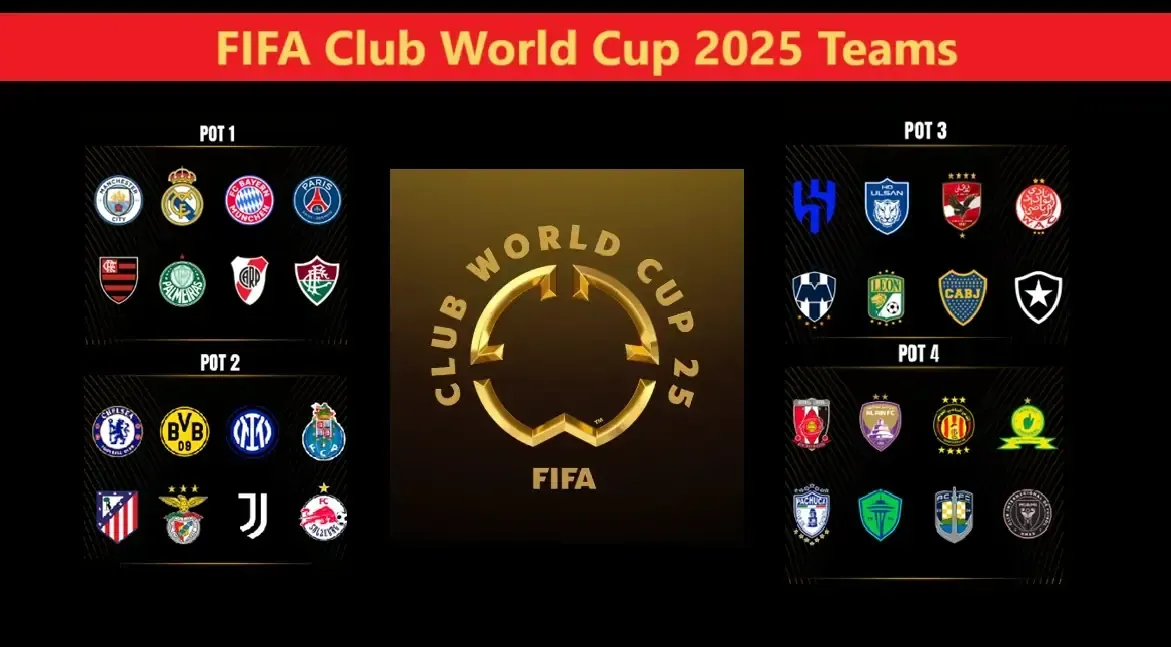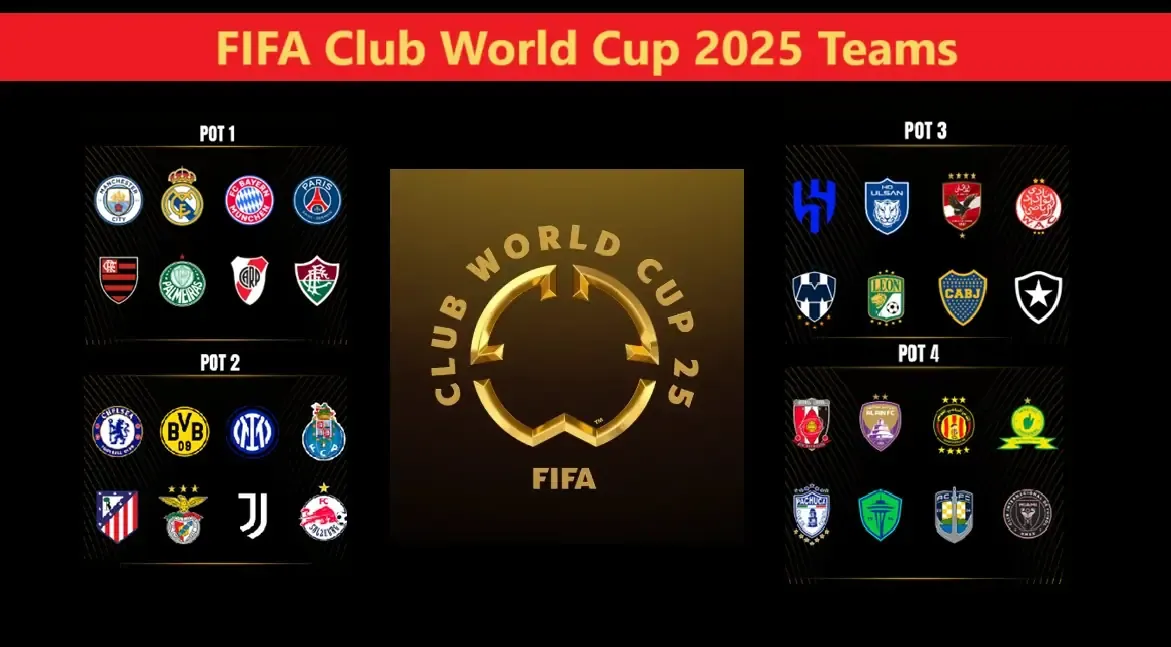
FIFA Club World Cup 2025: Qualified Teams and New Qualification Format Revealed
The FIFA Club World Cup 2025 is poised to revolutionize the landscape of international club football by expanding its format to include 32 teams from across six continental federations. This revamped tournament will not only feature an exciting array of top clubs but also introduce a new qualification system that rewards performance over the previous four seasons in various club competitions. As teams such as Manchester City, Real Madrid, Chelsea, and Al Ahly prepare to battle it out for global supremacy, fans can look forward to an unforgettable showcase of talent and skill, set to be broadcast live on DAZN. With ticket prices starting at just $40, this tournament promises to be a spectacular celebration of football at its finest.
FIFA Club World Cup 2025: Understanding the Expanded Format and Qualification Criteria
The upcoming FIFA Club World Cup 2025 is set to feature a robust lineup of 32 teams across six football confederations, showcasing a remarkable expansion of the tournament which traditionally included only seven teams. This change is part of FIFA’s broader strategy to enhance global competition and increase participation from various regions. Among the qualified teams, notable names include UEFA powerhouses such as Chelsea, Real Madrid, Manchester City, and Bayern Munich, alongside strong representatives from other confederations, like Palmeiras and Al Ahly. The tournament is eager to highlight the wealth of talent from around the globe, emphasizing the importance of club football in developing the sport on an international scale.
In addition to the traditional football powerhouses, the 2025 edition will see representation from regions like the Asian Football Confederation (AFC) and the Confederation of African Football (CAF), ensuring a diverse showcase of football styles and histories. Teams like Urawa Red Diamonds and Esperance de Tunis bring unique heritage to the tournament, promising exciting match-ups. The inclusion of these teams reflects FIFA’s commitment to promoting an inclusive competition that provides opportunities for underrepresented leagues to shine on a world stage.
Qualification for the revamped FIFA Club World Cup will now rely heavily on the performance metrics from club tournaments over the past four seasons. Points are accrued through match outcomes and progress in knockout rounds, with three points awarded for a victory, one point for a draw, and three points for advancing to the next stage. This method has already seen clubs like Fluminense and Manchester City excel, with Fluminense earning 39 points during their impressive Copa Libertadores run last year, while Manchester City accumulated 33 points following their UEFA Champions League triumph. Such a system aims to reward consistent performance and elevate the tournament’s competitive nature.
This revamped qualification process not only adds depth to the selections but also makes the competition more accessible for clubs from different leagues globally. Fans and analysts alike are keenly observing how this new format will influence the dynamics of club football, especially as teams like Al Ain and Ulsan Hyundai from Asia earn their spots alongside Europe’s elite. With qualification criteria based on established performance, the selection process aims to ensure that only the most deserving teams compete, elevating the tournament’s prestige.
Teams are classified into seeding pots based on their qualification standings, with the top eight clubs assigned to Pot 1. This includes illustrious clubs such as Manchester City and PSG, known for their financial resources and depth of talent. Pot 2 features well-respected teams like Chelsea and Borussia Dortmund, while Pot 3 and Pot 4 include teams from various regions, aiming to create an even playing field in the tournament. By structuring the seeding in this manner, FIFA seeks to enhance the competitiveness of the matches and maintain a balance between powerhouses and emerging clubs, which could lead to unexpected outcomes and thrilling fixtures.
The introduction of concrete seeding pots may significantly affect the draw process, setting up compelling matchups that fans are eager to witness. As the tournament draws closer, the anticipation grows over who will face off in the group stages and how newly paired clubs from distinct backgrounds will measure up against each other. The excitement surrounding this new structure and its potential to reshape not only the Club World Cup but also the broader landscape of club football remains palpable across the globe.
Fans looking to watch the FIFA Club World Cup 2025 will have the advantage of free live broadcasts on DAZN, which plans to offer coverage in multiple languages. This accessible viewing option is a significant step towards bringing international football to a wider audience, enabling fans from diverse backgrounds to engage with top-tier club matches without the barrier of costly subscriptions. The tournament’s reach will likely generate a massive global following, as football enthusiasts tune in to enjoy the action from their own homes.
Moreover, FIFA has ensured that attending the matches in person can be an affordable experience, announcing ticket prices starting at just $40. This move is aimed at encouraging local fans to fill the stands and support their teams, enhancing the atmosphere of the event. Ticket availability will be crucial for clubs expecting significant support, particularly those teams like Inter Miami, which may draw crowds as the host team. Overall, the combination of free viewing and affordable tickets promises to make the 2025 tournament especially accessible, reflecting FIFA’s commitment to promoting football worldwide.
The FIFA Club World Cup 2025 is poised to be a groundbreaking event, featuring 32 teams from across six federations, showcasing a diverse and competitive lineup. Qualified teams include heavyweights from Europe like Chelsea and Bayern Munich alongside prominent clubs from Asia, Africa, North America, South America, and Oceania. This marks a significant expansion from previous iterations, reflecting FIFA’s commitment to globalizing the tournament.
Key official statements from FIFA emphasize the tournament’s intent to enhance club football on the global stage, providing a platform for teams from various regions to compete at the highest level. Fans can expect a thrilling competition with matches broadcast live on DAZN, ensuring accessibility for a worldwide audience. Ticket prices start as low as $40, making it an attractive option for football enthusiasts.
Looking ahead, fans should mark their calendars as the tournament is set to begin on June 31, 2025. The format promises to deliver an exciting spectacle, with seeding pots assigned based on club performance, ensuring that top teams are strategically placed in the group stage draw. As anticipation builds, stakeholders, including players, clubs, and fans, are eagerly awaiting the kickoff of what is expected to be a landmark event in club football history.







